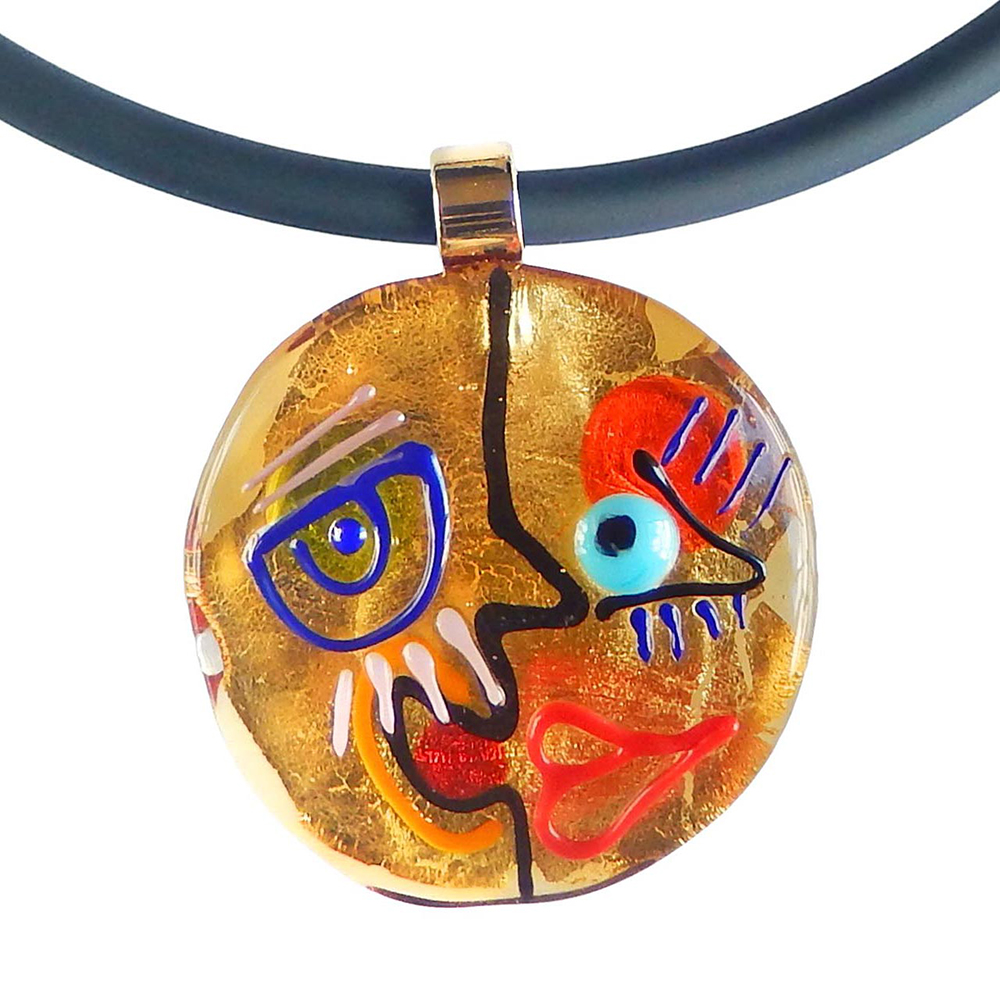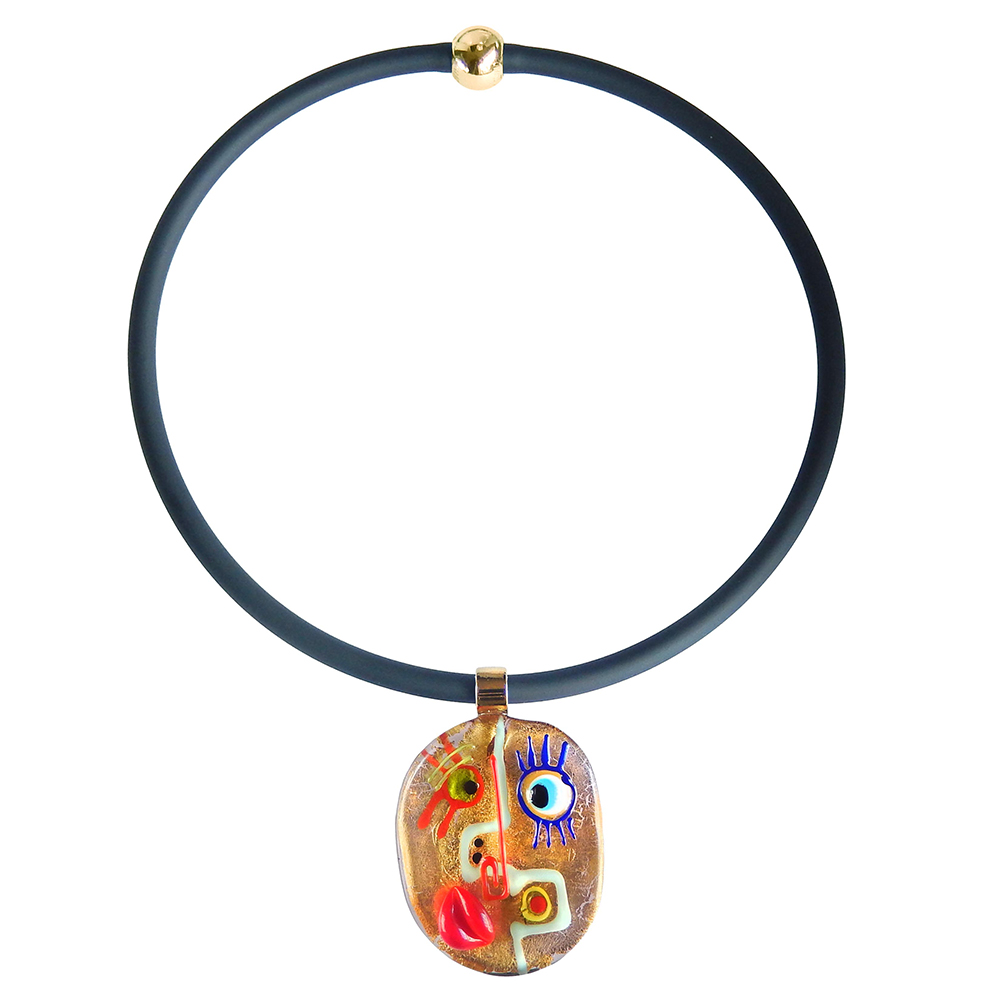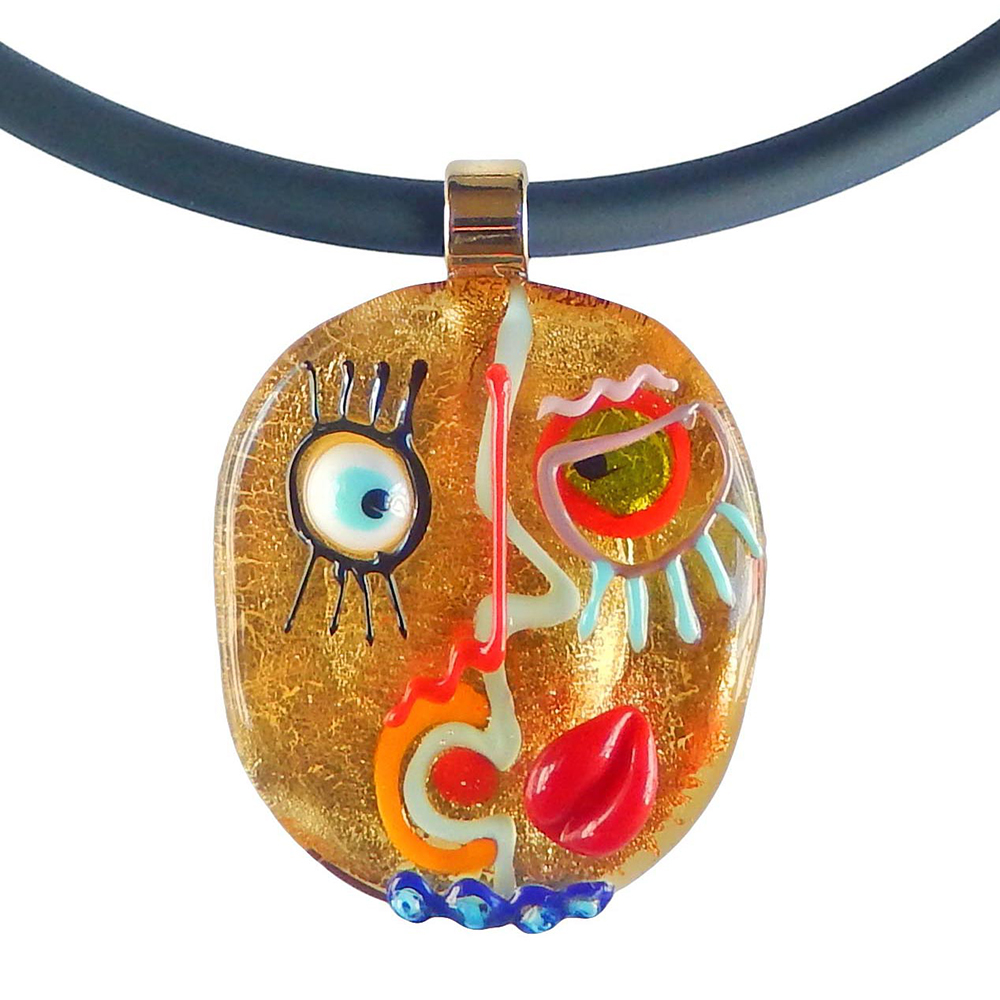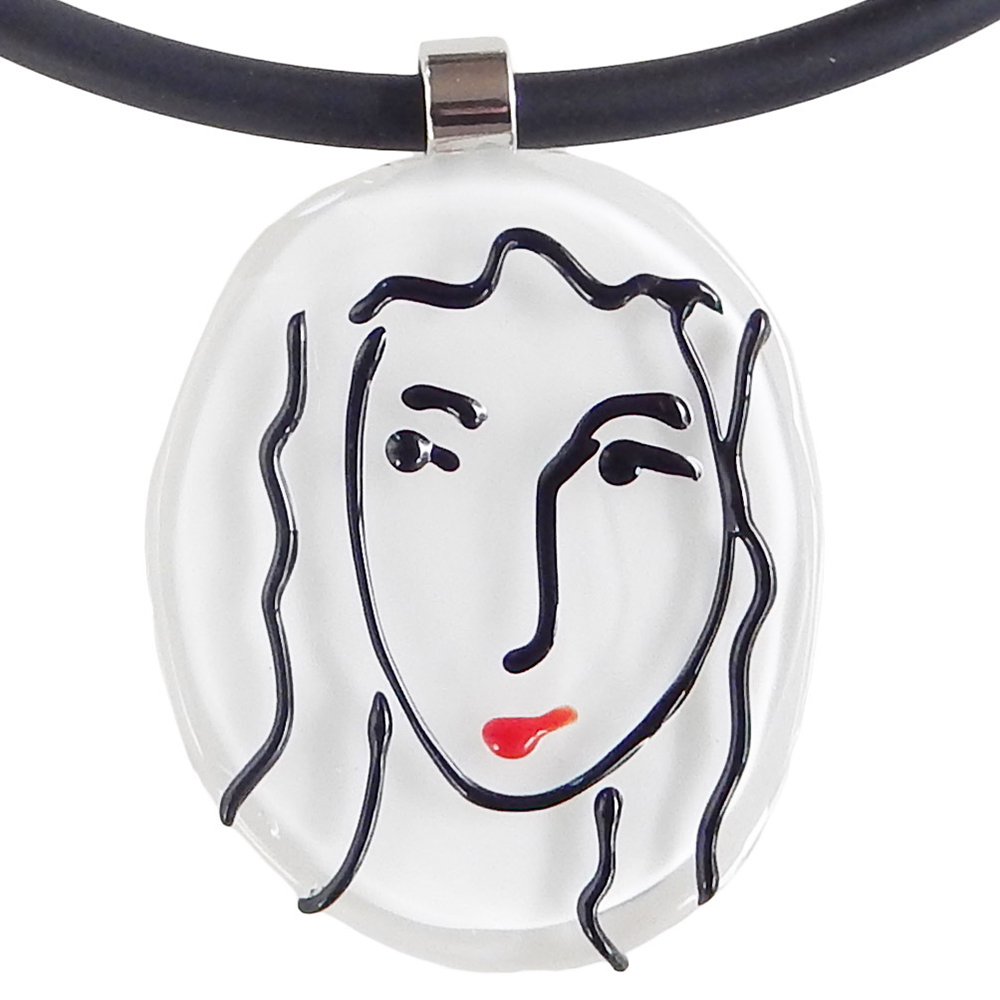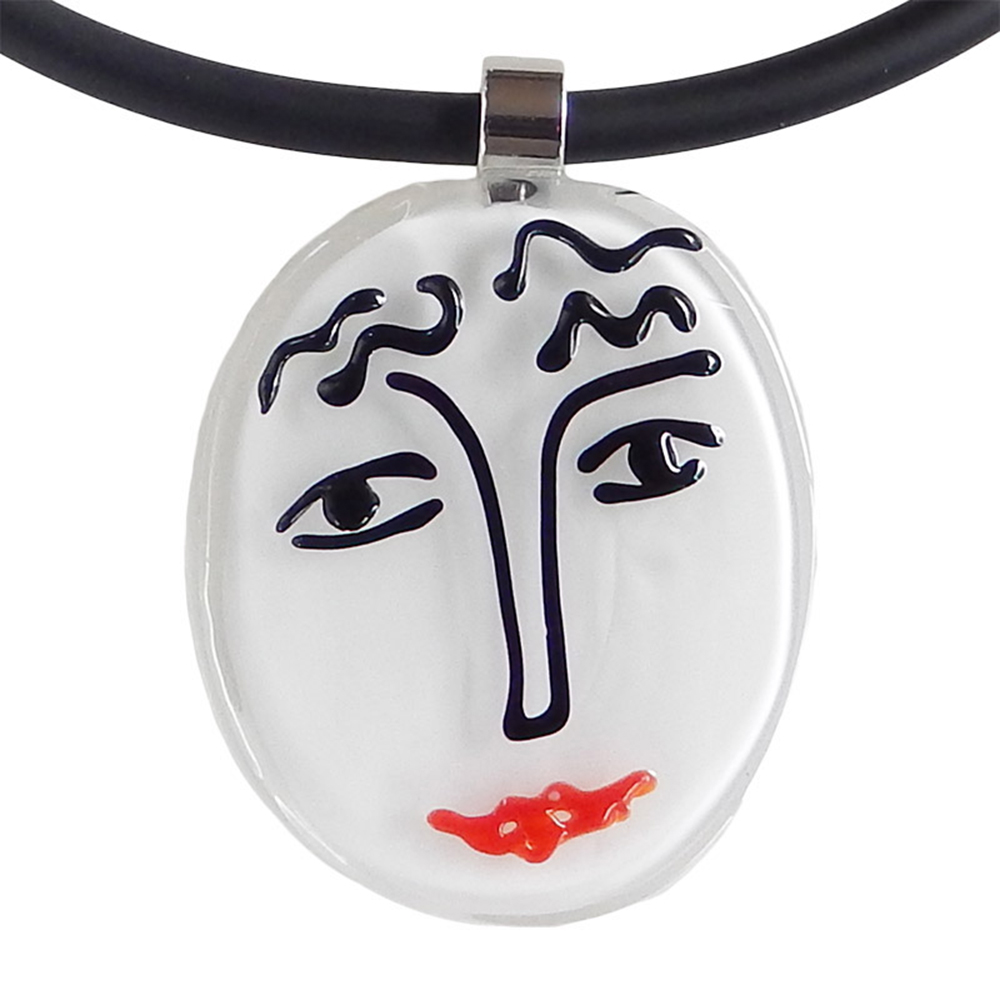The Murano glass necklaces in Cubist designs from Italianissimo were our best sellers for the holidays. Cubism revolutionized painting, sculpture and the performing arts in the early 20th century. Now it is influencing a new style of wearable glass art.
For over 30 years, Diane and Mauro Gennaretti of Italianissimo have commissioned the modern Murano glass maestros to create “art to wear.” Each glass jewel is hand-made using age old techniques of glass blowing, flameworking with a torch, and a furnace. To recreate the Picasso style features of their Cubist collection, molten glass is deftly trailed on the surface of golden blown glass medallions. In their Sketch collection, they celebrate the art of Matisse and Modigliani on a pure white glass medallion. The iconic moustache of the Surrealist Salvador Dali adds a whimsical touch to one of their designs. Every portrait makes you smile! Each piece of Italianissimo jewelry is unique and reflects the superb skills of the Murano glass artists. You can see the complete collection of Italianissimo Cubist and Sketch jewelry at our WMODA Shop.
Influences
The Cubist avant garde movement was pioneered by Picasso in Paris and spread throughout Europe. Cubism influenced the Futurism, Dada and Art Deco movements with its simplification of geometric forms and the association of mechanization and modern life. Constructivism evolved in response to Picasso’s technique of constructing sculpture from separate elements. In Cubist artwork, objects are analyzed, broken up and reassembled in an abstracted form. The emphasis on form as opposed to color, the deconstruction of perspective, and a multitude of viewpoints represent the subject in Cubist art. The work of Georges Braque, one of the early exponents of Cubism, inspired the name after a review of his 1908 exhibit claimed he was "reducing everything, places and figures and houses, to geometric schemas, to cubes". Initially, astonished Americans, accustomed to realistic art, did not respond positively to the new styles of European modern art.
Among the important influences on artists such as Picasso and Matisse were primitive African art and tribal masks. The stark power and simplicity intrigued European artists and led to striking portraits with simplified features. Faces and masks were a feature of the cabaret culture which synthesized drama, poetry, performance and the visual arts, as can be seen in Bertold Loffler’s work for the Café Fledermaus in Vienna. Modern artists also embraced the simplicity of children’s art to express their vision. Picasso often suggested children’s play in his art and at the end of his career he created a series of schematic portraits and heads with just a few simple strokes. The zigzagging marks suggest the idea of children’s play. Similarly, Matisse and Modigliani distilled the essence of human features into a few simple lines in their art.
Read More...
Italianissimo "Cubist"
Italianissimo "Sketch"
Influences

Picasso
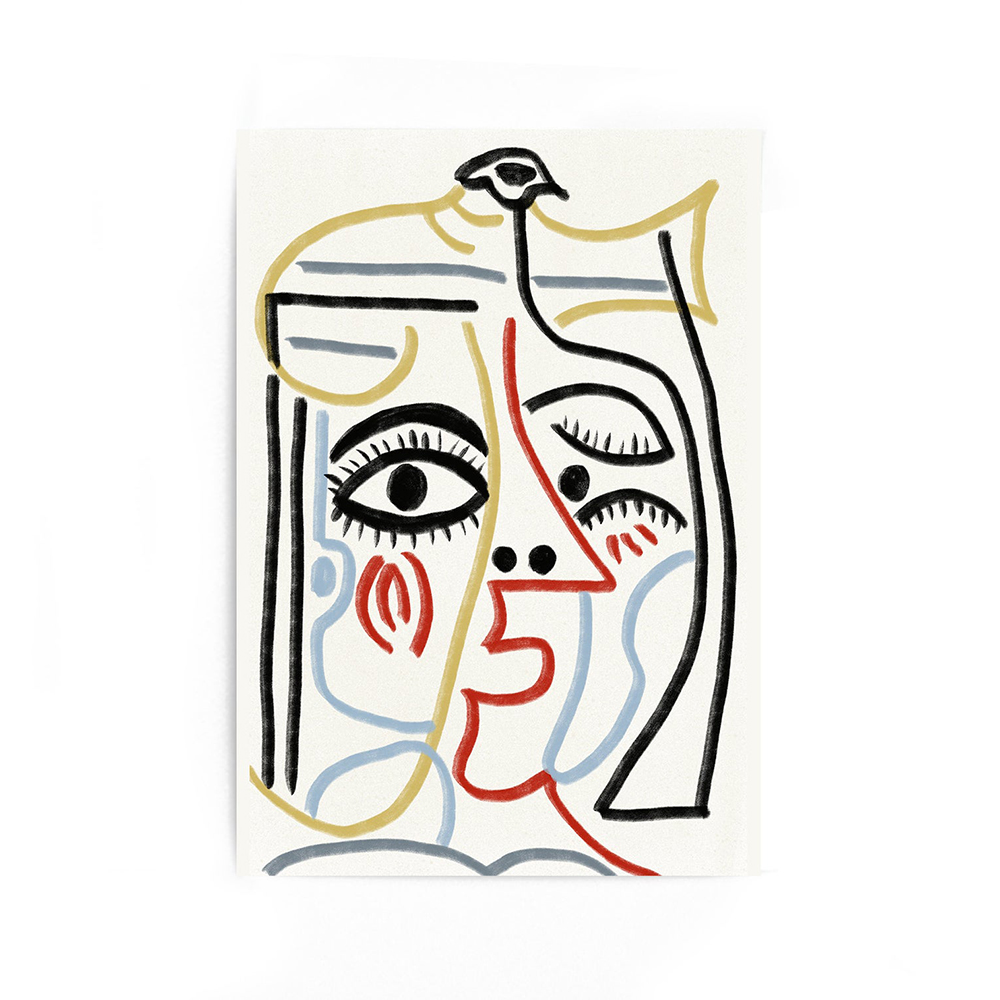
Picasso Faces
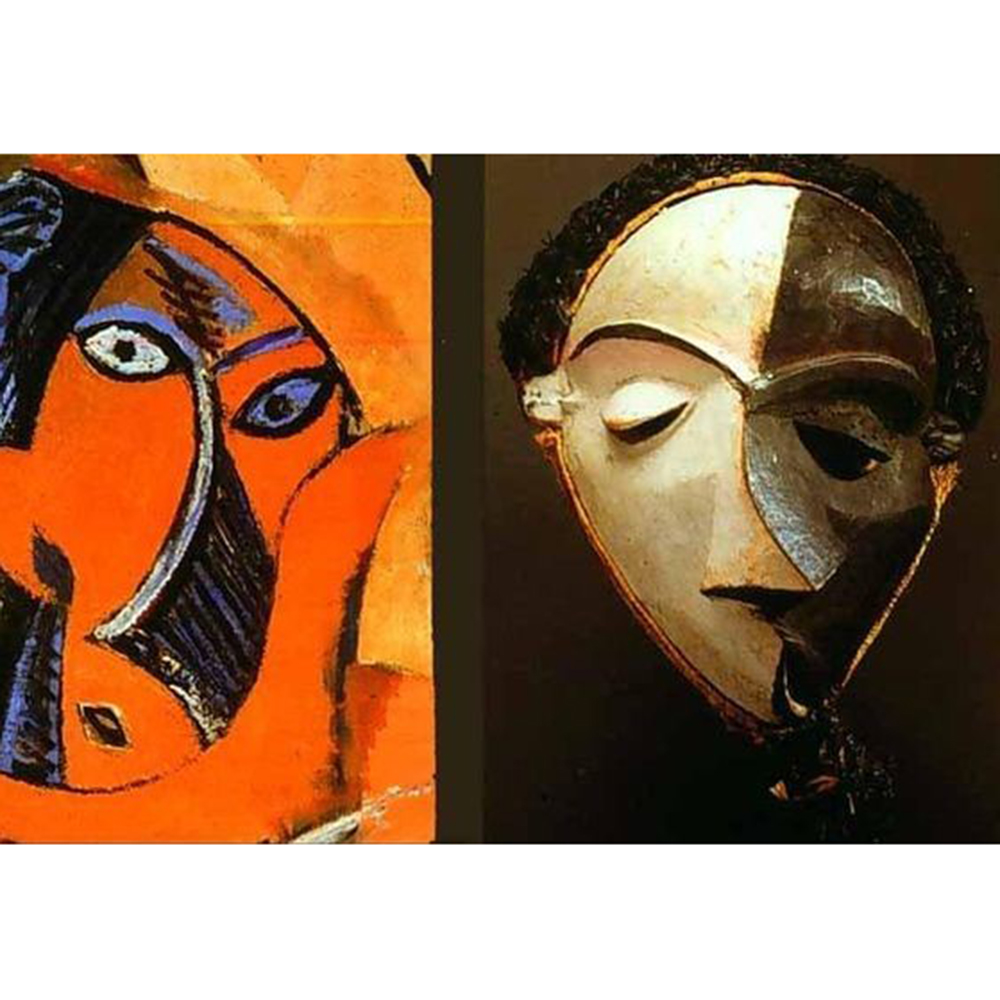
Picasso with African Masks
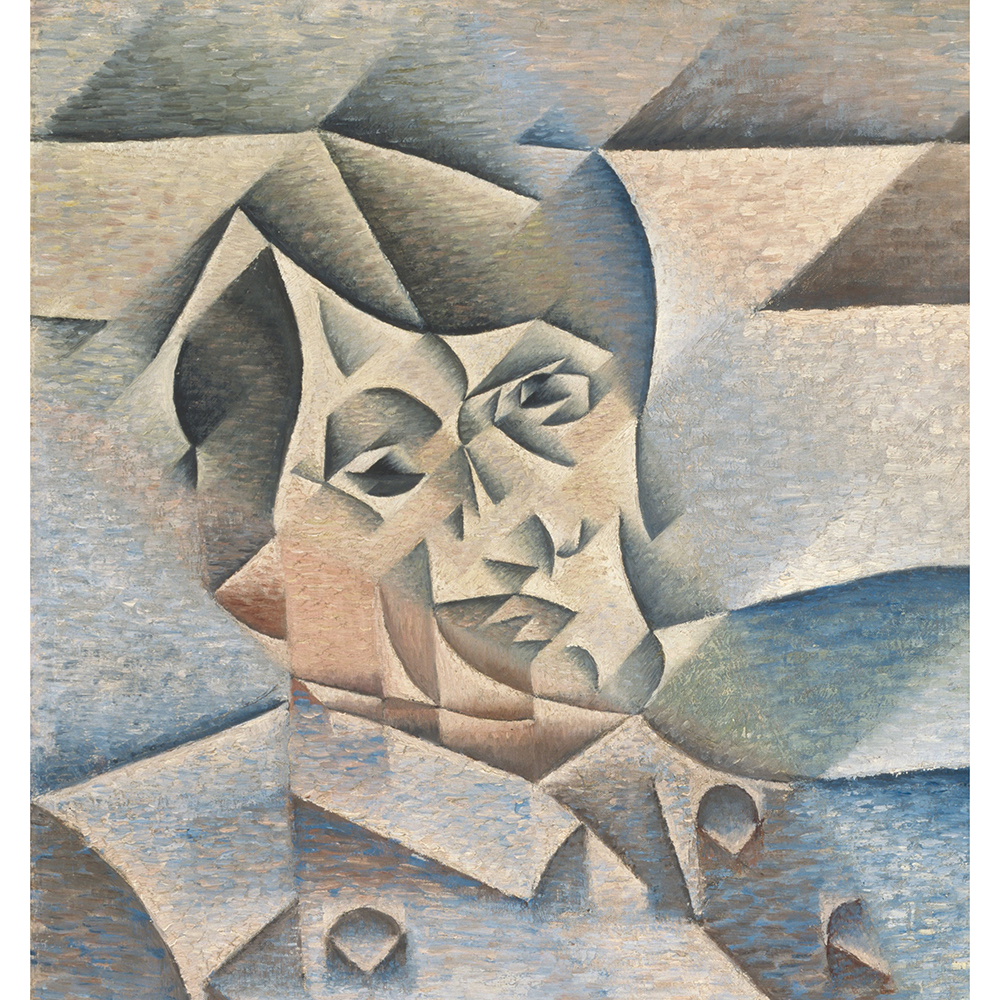
Detail of Cubist Picasso by Juan Gris
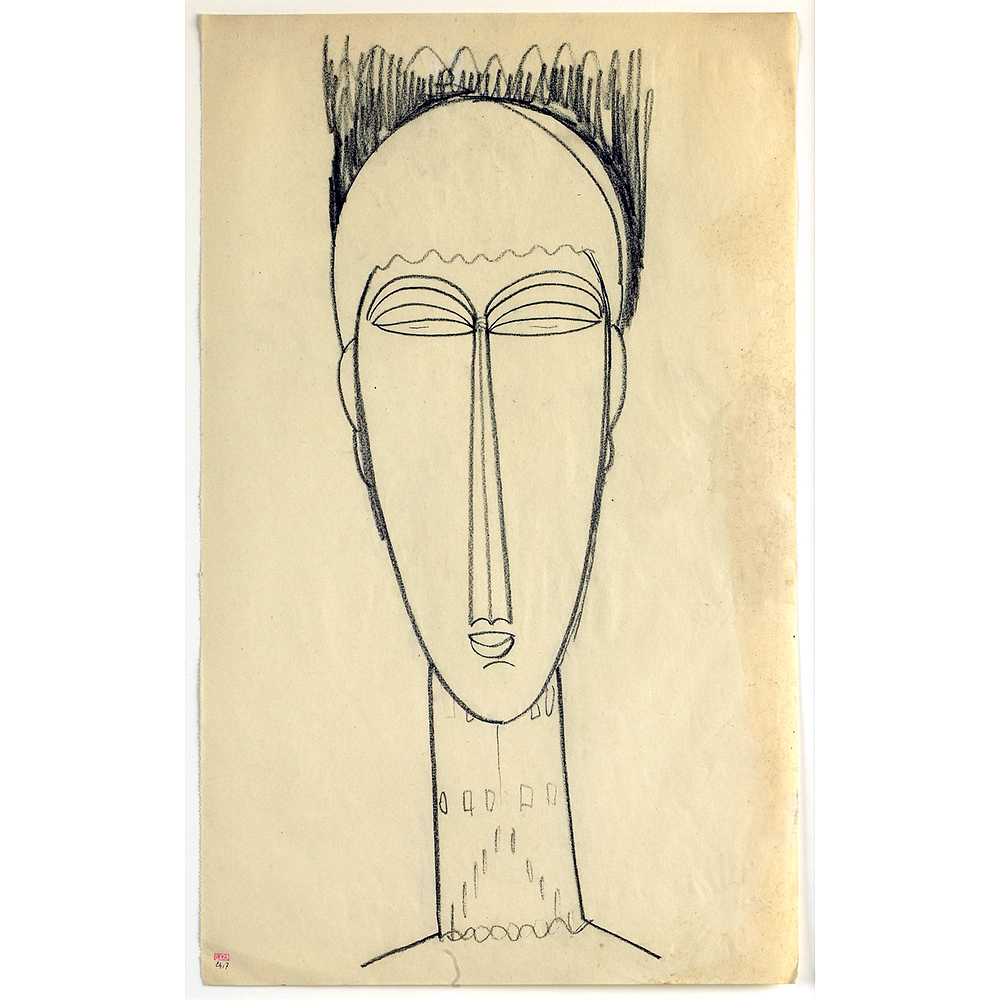
Modigliani Face


